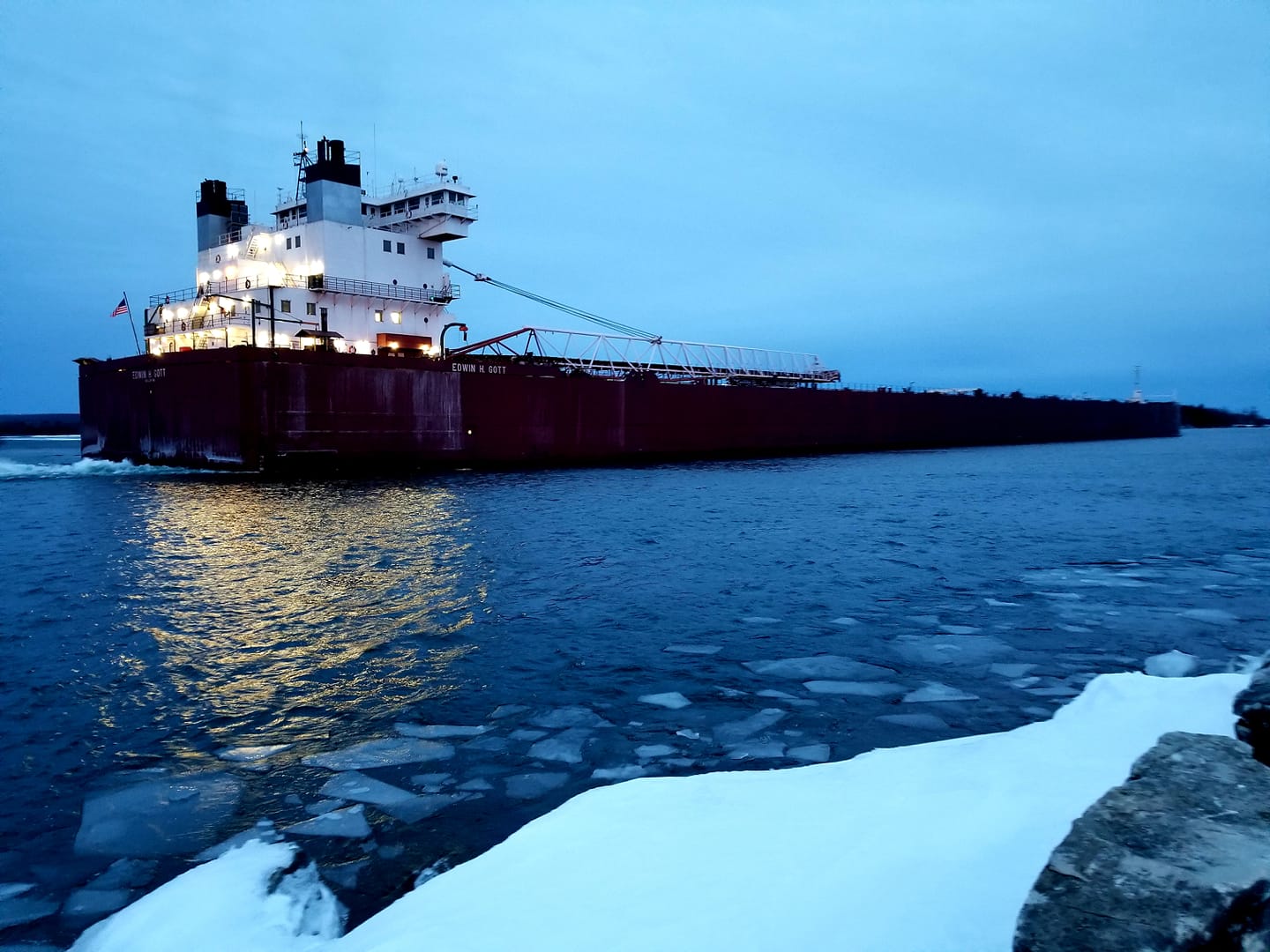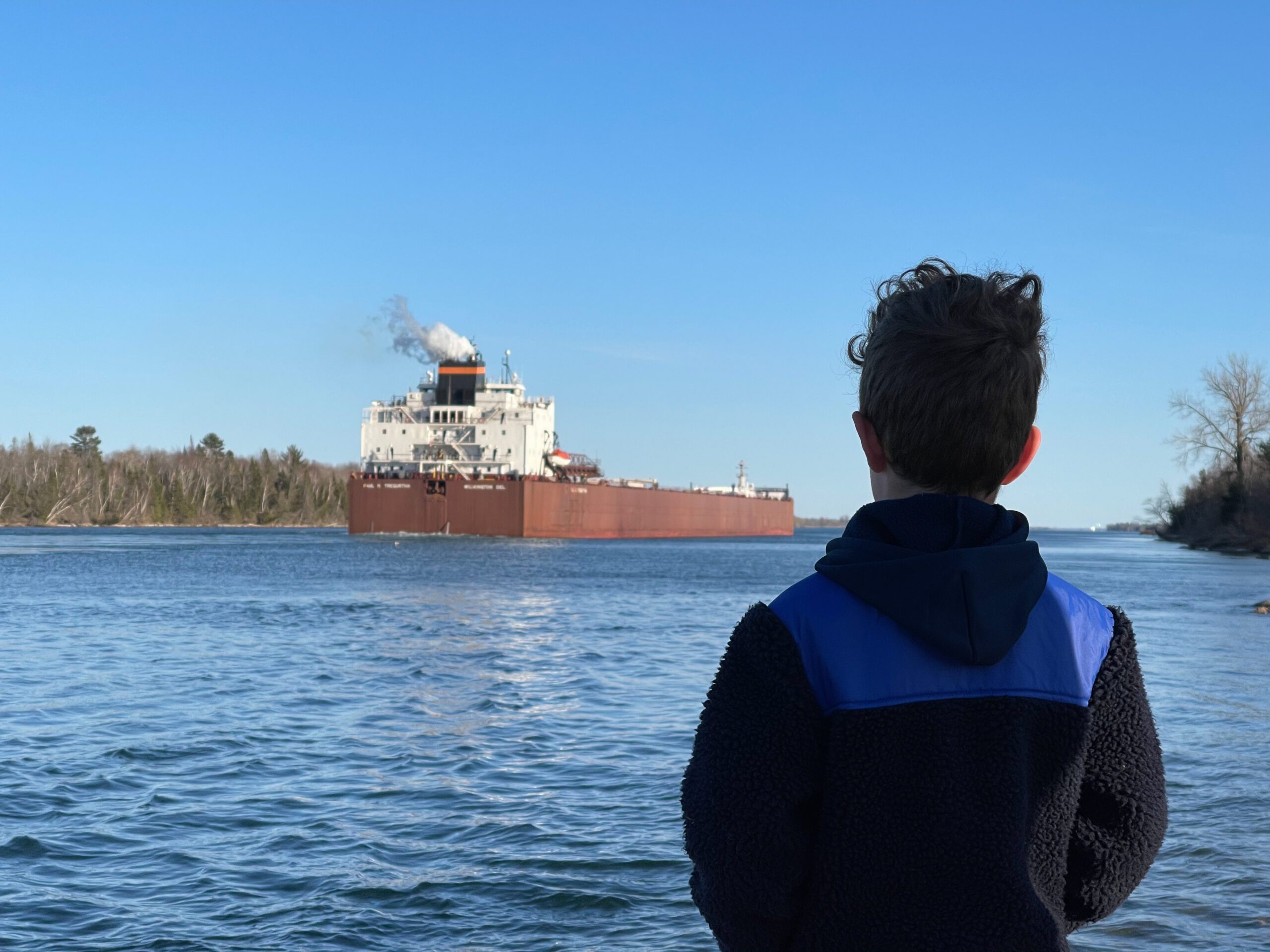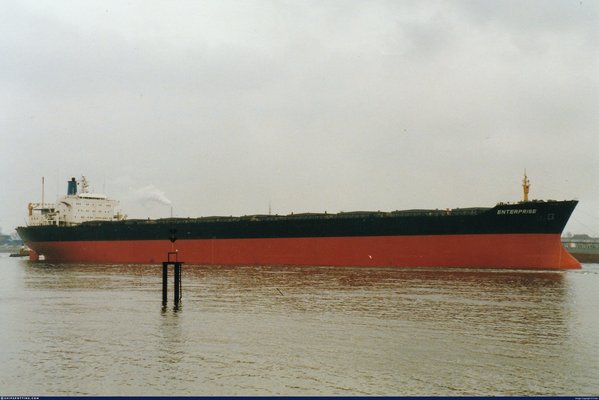Erie Fred
Member
- Messages
- 6,370
- Location
- Erie, Pa USofA


 saultstemarie.com
saultstemarie.com
The wreck was found in two pieces, reports suggest she was listing before going down, so a good change the relatively small piles of ore in the holds moved, or she was taking water in the holds, in effect overloading her. Ore carriers cracking due to the high stresses is very common. Read up on the Derbyshire, or the Kowloon Bridge. I did a trip bashing ore from Canada to British Steel ( Port Talbot or Redcar), in the winter. We had cracks all over the decks around the hatch coamings. And welding doubling plates at every port. This is the one I was on just out of drydock in Hamburg.Always fascinated me that SS Edmund, That crew had a zero chance of survival the poor souls. That big lake becomes a rough sea in a storm

Friends dad was supposed to be wireless op on the Derbyshire, last minute crew change saw him sail on another ship that voyageThe wreck was found in two pieces, reports suggest she was listing before going down, so a good change the relatively small piles of ore in the holds moved, or she was taking water in the holds, in effect overloading her. Ore carriers cracking due to the high stresses is very common. Read up on the Derbyshire, or the Kowloon Bridge. I did a trip bashing ore from Canada to British Steel ( Port Talbot or Redcar), in the winter. We had cracks all over the decks around the hatch coamings. And welding doubling plates at every port. This is the one I was on just out of drydock in Hamburg.
View attachment 472314
I heard or read somewhere that the impact of the ore landing would work harden the steel of the hull, which lead to cracks eventually.Ore bashers had a hard life, and hulls run at high stress levels due to the way iron ore is loaded. Ore is very dense and has a high mass versus volume, its common to only load alternate holds.
As a generalisation a bulk carrier may have say 9 holds each carrying approximately the same volume of cargo. Before loading any cargo a loading plan is drawn up, taking in to account how much fuel, water etc is on board, time of the year and location. With grain for example all 9 holds would be full, but due to low density and high volume the ship is really only part loaded. Hull stress levels would be minimal relative to maximum allow stress. Re do your sums for iron ore and every other hold would be loaded and if you looked in there would be relatively small volume due to it very high density. So you can end up fully loaded very quickly, quicker than you might want, allowing time to drop out ballast etc. with an ore cargo your hull allowable stress would be up at say 90%. The ship pictured above was 125000 tons and was often loaded with ore in under 24 hours. One place in Brazil Sepitiba could load you in 12 hours. Seven Islands in Canada was very quick too. Iron ore dropping over 100 feet would possibly have an impact on the steel.I heard or read somewhere that the impact of the ore landing would work harden the steel of the hull, which lead to cracks eventually.
And nobody wants a crack in their bottom when out at sea…
And more than a few ships have broken their back when tied up alongside, from being loaded unevenly.
We learned a load of this sort of stuff when I was working offshore and doing no end of safety training and courses etc.
There are some interesting videos of oil tankers with a fixed camera down the centre of the vessel, showing just how much it flexes and twists in big seas.As a generalisation a bulk carrier may have say 9 holds each carrying approximately the same volume of cargo. Before loading any cargo a loading plan is drawn up, taking in to account how much fuel, water etc is on board, time of the year and location. With grain for example all 9 holds would be full, but due to low density and high volume the ship is really only part loaded. Hull stress levels would be minimal relative to maximum allow stress. Re do your sums for iron ore and every other hold would be loaded and if you looked in there would be relatively small volume due to it very high density. So you can end up fully loaded very quickly, quicker than you might want, allowing time to drop out ballast etc. with an ore cargo your hull allowable stress would be up at say 90%. The ship pictured above was 125000 tons and was often loaded with ore in under 24 hours. One place in Brazil Sepitiba could load you in 12 hours. Seven Islands in Canada was very quick too. Iron ore dropping over 100 feet would possibly have an impact on the steel.
Now take that boat out in all weathers and sea conditions its going to flex like a flexi thing, break a bit of ice and a couple of load cock ups with previous cargos and cracks become the norm! The North Atlantic is a harsh place in winter, bad enough to lift the prop of a 900ft, 1200000 ton ship out the water, enough to trip out the engine on overspeed.
That one above had a box girder up ( water tight openings) each side along the double bottoms. Inside it was used a a pipe tunnel. There was like a railway line for moving valves and tools up and down. In rough water you could look along the lines and watch them bending.There are some interesting videos of oil tankers with a fixed camera down the centre of the vessel, showing just how much it flexes and twists in big seas.
Biggest ship I ever worked on was only about 120 metres long, we tended to just get thrown around instead of flexed.
Squeaky bum time..That one above had a box girder up ( water tight openings) each side along the double bottoms. Inside it was used a a pipe tunnel. There was like a railway line for moving valves and tools up and down. In rough water you could look along the lines and watch them bending.
I thought I put that in the top of the OP.There's a good article in Wikipedia on the Edmund Fitzgerald which gives a fair bit of detail on the construction, use and possible causes of the accident. https://en.wikipedia.org/wiki/SS_Edmund_Fitzgerald
Yes and no….they are designed to flex and bend. If they didnt they would break up far more quickly. Look at air liner wings for example. Its fairly simple to bend a ship just by getting your loading sequences wrong! Or overload a ship by bending it to go deep at the ends keeping the loading lines in the middle high.Squeaky bum time..
Waves are very powerful things.
I worked on a Cold War era Russian ship once, MV Baki, built like a tank, as were all Russian ships built in those days. It had sea water deluge system for washing radioactive material off the superstructure, and lots of electrical systems sealed in boxes, that didn’t appear on any of the ships diagrams and paperwork. And all fuel tanks were double skinned, not built into the hill.That one above had a box girder up ( water tight openings) each side along the double bottoms. Inside it was used a a pipe tunnel. There was like a railway line for moving valves and tools up and down. In rough water you could look along the lines and watch them bending.
And trying to sleep in your bunk, up in the bows, when you’re literally weightless one second, as the you crest a wave, then 300kg ground into the mattress when the boat hits down hard.When you are on board quite a biggish ship, a frigate for example and she rears up in heavy seas and then comes crashing down and almost stops against the oncoming sea you realise just how insignificant you are and just how powerful that sea is.

